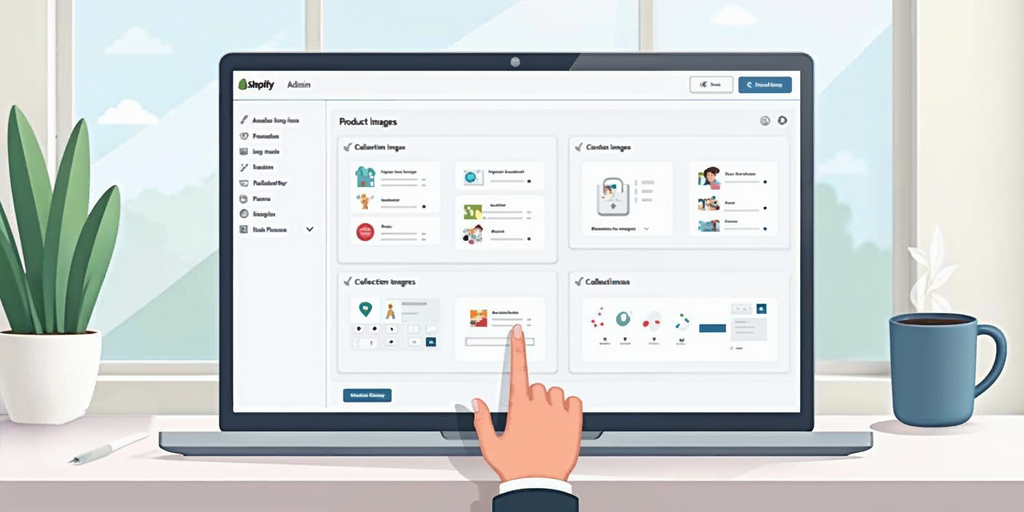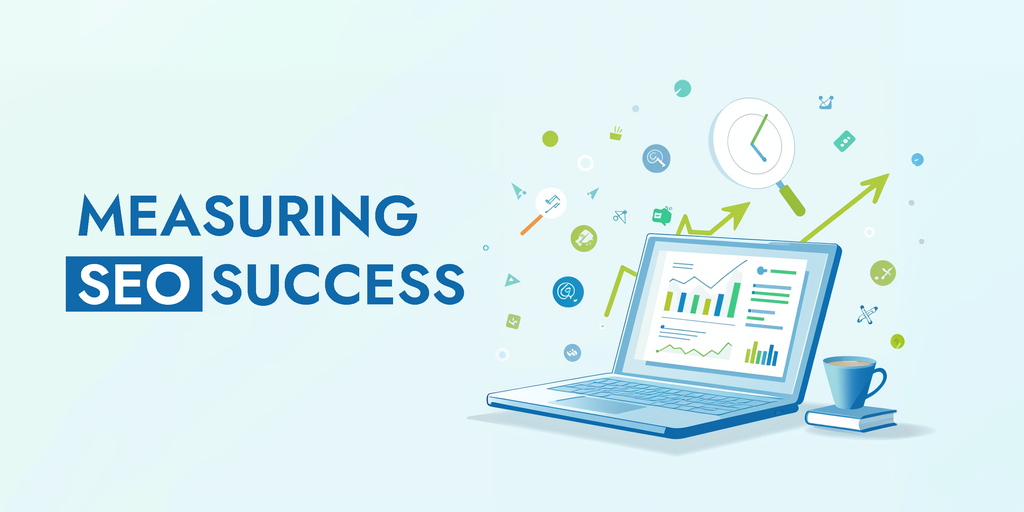How Do You Know if Your SEO is Working? A Straightforward Guide to Measuring SEO Success

If you’re investing time and money into SEO, you want to know if it’s paying off. SEO isn’t magic—it takes a strategic, data-driven approach to see results. But how exactly can you measure SEO performance and determine if it’s working? In this guide, we’ll walk through the most effective ways to track SEO progress, which metrics matter, and when it’s time to adjust your strategy.
Why SEO Results Take Time
You’ve likely heard that SEO is a long game, and that’s spot-on. Expecting results in a week or even a month can lead to disappointment. SEO typically takes between three to six months before you see notable changes in rankings, traffic, or conversions.
Why the Wait?
Search engines, particularly Google, need time to crawl, index, and rank your pages. The timing also depends on factors like keyword competition, your site’s authority, and the quality of your content. Patience is key here—consistent, steady growth is the name of the game in SEO.
Essential Indicators that Your SEO is Working
There are specific metrics to keep an eye on if you’re serious about knowing whether your SEO strategy is effective. These metrics show if your efforts are getting your site more visibility, more traffic, and ultimately, more conversions.
1. Organic Traffic Growth
Organic traffic is the number of visitors who find your site through unpaid search engine results. A steady increase here is often the first sign that your SEO is working. Google Analytics (or “Google Analytics Google” if you’re feeling adventurous) is a fantastic tool for tracking this metric. Head to Acquisition > Channels > Organic Search to see how much organic traffic your site has attracted over time.
Pro Tip: Compare organic traffic month-over-month and year-over-year for a clearer view of growth trends. Look at spikes and dips to understand if your strategy changes (or even Google updates) are impacting traffic.
2. Keyword Rankings
Your website’s keyword rankings reveal how high your pages are showing up for specific search terms. Tracking your keyword positions over time is critical because higher rankings mean more visibility and a better chance of clicks. Use tools like Google Search Console, SEMrush, or Ahrefs to monitor these rankings. You’ll be able to see which keywords are gaining traction and which may need more focus.
Tip: If certain keywords are stubbornly ranked lower, investigate competitors. See what they’re doing differently and look for content gaps you can fill.
3. Conversion Rate from Organic Traffic
SEO isn’t just about traffic—it’s about getting the right traffic. That’s where your conversion rate comes in. The conversion rate shows how many visitors take the actions you want, such as filling out a form or making a purchase. To track conversions from organic traffic in Google Analytics, set up specific goals under Conversions > Goals > Overview.
Actionable Insight: If you have traffic but low conversions, it could mean your SEO strategy is attracting the wrong audience. Consider optimizing content for keywords with strong purchase or lead intent.
4. Bounce Rate and Dwell Time
A high bounce rate means visitors are leaving your site quickly, which might indicate they didn’t find what they were looking for. Meanwhile, dwell time—the length of time visitors stay on your page—is another sign of user engagement. Both can indirectly impact rankings, as Google tends to reward content that holds user attention.
To check these metrics, go to Behavior > Site Content > All Pages in Google Analytics. For bounce rate, make improvements like ensuring fast load times, making content scannable, and using internal links to keep users browsing.
Quick Fix: If your bounce rate is high on specific pages, reevaluate the content. Does it align with what users would expect based on the keywords they used to find you?
5. Growing Backlink Profile
High-quality backlinks from other websites signal to Google that your content is valuable and worth linking to. The more reputable sites linking to you, the higher your domain authority (DA) and the better your SEO performance. Use tools like Ahrefs, Moz, or SEMrush to monitor your backlinks and see if your profile is growing.
Strategy Tip: To build quality backlinks, focus on creating shareable content like industry reports, how-to guides, and infographics. You can also reach out to relevant sites for guest posting opportunities.
Check Out Our SEO Service.
Checking Your Site’s Technical SEO Health
SEO isn’t all about content. Technical SEO is just as crucial because it ensures search engines can crawl and understand your site. Here’s how to evaluate your site’s technical health.
1. Page Speed and Core Web Vitals
A slow site can lead to higher bounce rates and lower rankings. Page speed and Core Web Vitals (like load time and interactivity) are key factors for Google’s ranking algorithm. To test your site’s speed, use Google PageSpeed Insights and make improvements like compressing images or using a content delivery network (CDN).
Fast Tip: If your page speed is in the red, it’s time to optimize. A faster website isn’t just good for SEO—it’s good for user experience, too.
2. Mobile Optimization
Since Google’s mobile-first indexing, mobile optimization is non-negotiable. You can check if your site is mobile-friendly with Google’s Mobile-Friendly Test. Make sure all text is readable without zooming, buttons are easy to click, and images are responsive.
Pro Tip: Most users today browse on mobile devices. Ensuring a smooth mobile experience can keep them engaged and happy.
3. Site Structure and Crawlability
A well-organized site structure helps Google crawl and index your pages more effectively. Use tools like Screaming Frog or the SEMrush Site Audit tool to identify issues like broken links, missing tags, and duplicate content.
4. SSL Certificate and Security
An SSL certificate (which shows as HTTPS in the browser) is a Google ranking factor and helps secure user data. Check your SSL status in Google Search Console and make sure it’s up to date. An insecure site can be penalized in search rankings and lose user trust.
Actionable Step: If your site still uses HTTP, update it to HTTPS for a security and SEO boost.
The Best Tools for Tracking SEO Performance
Having the right tools makes measuring SEO success easier. Here’s a quick list of must-have tools for tracking your website’s SEO:
- Google Analytics: For tracking organic traffic, bounce rates, and conversion rates.
- Google Search Console: Provides insights on keyword rankings, indexing issues, and your backlink profile.
- SEMrush, Ahrefs, or Moz: These all-in-one SEO tools are perfect for keyword tracking, competitor analysis, and site health audits.
- Screaming Frog: Great for in-depth technical SEO audits, including finding broken links and analyzing site structure.
Each tool provides unique insights, so using a combination of them will give you a fuller picture of your SEO performance.
When to Reevaluate Your SEO Strategy
Sometimes, despite your best efforts, things don’t go as planned. Here’s when you might need to hit pause and rethink your approach:
- Plateau in Organic Traffic: If your traffic hasn’t moved for months, it might be time to analyze your strategy. Check if your keywords are outdated or if competitors have outpaced you.
- Declining Keyword Rankings: Competitors or Google updates can cause rankings to slip. Regularly review your keywords and see if they’re still relevant.
- High Bounce Rate with Low Conversions: If visitors leave without converting, your content may not match their needs, or the keywords may attract the wrong audience.
- Backlink Quality Issues: A sudden increase in low-quality backlinks can hurt your ranking. Conduct backlink audits and disavow any spammy links.
Wrapping Up
Measuring SEO performance isn’t just about tracking numbers; it’s about understanding how your site connects with your audience. By focusing on metrics like organic traffic, keyword rankings, conversions, and bounce rates, you can get a solid picture of what’s working and what isn’t.
Keeping your technical SEO in check and using the right tools will help keep your strategy on the right track. Remember, SEO is a marathon, not a sprint—stay consistent, make data-backed adjustments, and watch your efforts pay off.
Share via



